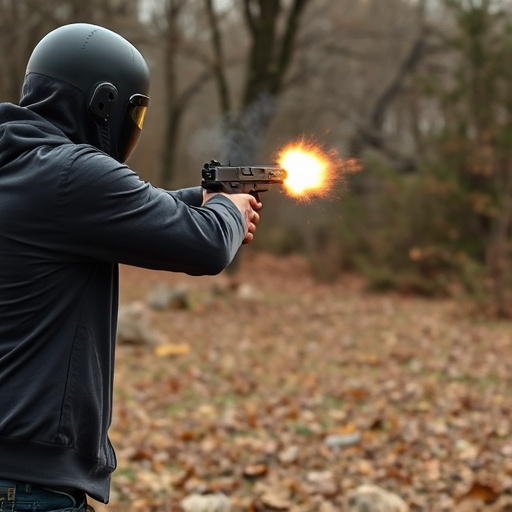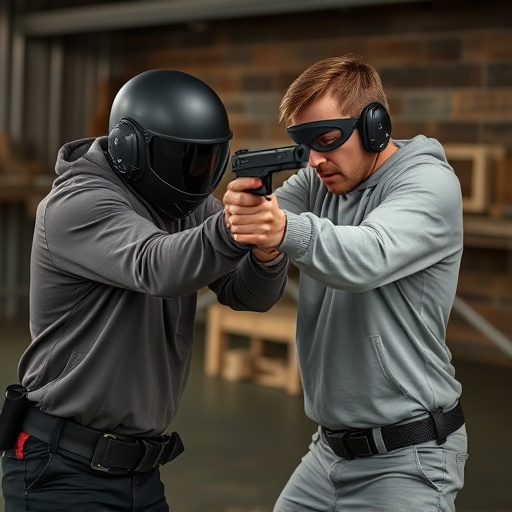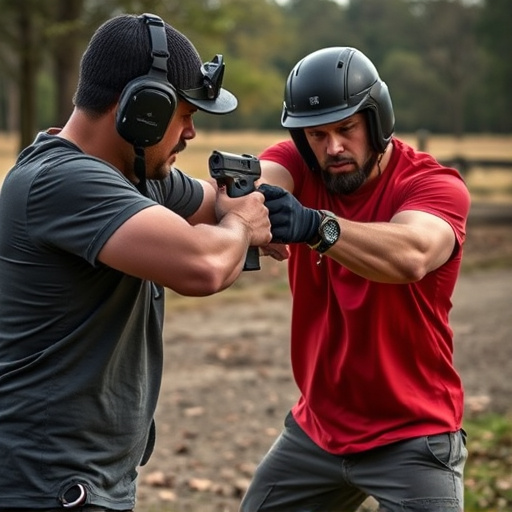Unveiling Stun Gun Detection: Challenges & Solutions for Self-Defense
While high-tech stun gun detection methods using metal detectors and AI imaging exist, affordable st…….
While high-tech stun gun detection methods using metal detectors and AI imaging exist, affordable stun guns remain a popular choice for personal defense due to varying US concealed carry laws. The challenge of detecting concealed stun guns, despite advanced technologies, highlights the need for improved scanning methods. Investing in law enforcement training and developing innovative security solutions like non-metallic stun guns is crucial to enhance public safety in an era where affordable self-defense options are widely accessible.
In today’s world, the need for personal safety is paramount. With concealed carry laws varying across regions, individuals seeking effective self-defense options often turn to stun guns. This article delves into the complex landscape of stun gun detection technologies, exploring current legal frameworks and the market’s diverse yet affordable offerings. We dissect challenges in identification and propose potential solutions, shedding light on future prospects for enhanced personal security. Understanding these dynamics is crucial for empowering individuals to make informed decisions regarding their safety.
- Understanding Stun Gun Detection Technologies
- The Current State of Concealed Carry Laws
- Affordable Options for Self-Defense: A Market Overview
- Challenges in Detecting Concealed Stun Guns
- Potential Solutions and Future Prospects
Understanding Stun Gun Detection Technologies

Stun gun detection technologies have evolved significantly, but understanding how they work is crucial in addressing concealed carry concerns. These systems employ a variety of methods to identify stun guns, ranging from metal detectors that can alert security personnel to more advanced sensors that analyze electrical signals emitted by the device. Some devices even use AI-driven imaging techniques to detect unique energy signatures.
Affordable stun guns for self-defense play a significant role in this context. While high-tech detection methods offer robust security, budget-friendly options provide individuals with accessible means of personal protection. However, it’s important to note that no single technology is foolproof, and a multi-layered approach—combining physical searches, advanced sensors, and user awareness—is often the most effective strategy for comprehensive security in public spaces.
The Current State of Concealed Carry Laws

The current landscape of concealed carry laws varies greatly from state to state in the US, creating a patchwork that leaves many concerned about their ability to protect themselves. While some states have relatively relaxed regulations allowing for easy acquisition of concealed firearms, including stun guns, others have stringent requirements that make it more challenging for law-abiding citizens to exercise their right to self-defense. This disparity raises questions about accessibility and safety, particularly when considering affordable stun guns for self-defense as a viable option for personal protection.
In many states, concealed carry permit holders are required to undergo training and background checks before they can purchase and carry a stun gun or firearm. Some regions also implement specific restrictions on the type, size, and power of stun devices allowed for concealed carry. These regulations aim to balance the right to self-defense with public safety concerns, but critics argue that strict laws may deter responsible citizens from arming themselves, leaving them vulnerable in situations where they might need a stun gun for protection.
Affordable Options for Self-Defense: A Market Overview

In today’s world, where personal safety is a growing concern, affordable stun guns for self-defense have gained significant popularity. These non-lethal weapons offer individuals an accessible and cost-effective way to protect themselves against potential threats. The market for affordable stun guns is vast and diverse, catering to various needs and budgets. One can easily find compact and discreet models suitable for everyday carry, as well as more powerful options designed for enhanced protection.
Several manufacturers now produce stun devices that are not only effective but also reasonably priced. These products often come equipped with features like high-voltage outputs, multiple settings, and durable construction, ensuring users have a reliable tool at their disposal. Moreover, the availability of both online and offline retail options allows customers to compare prices, read reviews, and make informed decisions about which stun gun best suits their self-defense requirements without breaking the bank.
Challenges in Detecting Concealed Stun Guns

Detecting concealed stun guns presents a unique challenge for security personnel and law enforcement due to their compact size and the diverse methods of concealment. Unlike traditional firearms, stun guns are designed to be easily hidden, making them less noticeable during routine checks or in high-pressure situations. This is particularly concerning given that self-defense is one of the primary reasons individuals opt for affordable stun guns as a personal safety measure.
The small size and varying shapes of stun guns can make them hard to identify visually. They often resemble everyday objects like flashlights, lipsticks, or even mobile phones when concealed properly. Advanced metal detectors and specialized imaging technologies can aid in detection but are not foolproof. Trained officers may rely on tactile searches or suspicious behavior patterns to uncover concealed weapons, but this requires close proximity and could escalate tense situations.
Potential Solutions and Future Prospects

Potential solutions to address concealed stun gun detection concerns include investing in advanced scanning technologies and training law enforcement personnel to identify these devices more effectively. Several affordable stun guns for self-defense are now available, offering individuals a viable option for personal safety. These weapons have been designed with subtle features that make them harder to detect during routine security checks.
Looking ahead, future prospects involve the development of even more sophisticated detection methods, such as advanced imaging techniques and artificial intelligence algorithms. By integrating these technologies into security systems, authorities can significantly enhance their ability to identify concealed stun guns. Additionally, ongoing research in materials science could lead to the creation of new types of non-metallic stun guns that are even harder for current scanners to detect.
In light of the evolving landscape of self-defense, where concealed stun gun detection presents significant challenges, it’s clear that affordable options for self-defense must also adapt. The market overview highlights a need for accessible and effective solutions. By addressing the current gaps in technology and legislation, we can work towards ensuring public safety without compromising accessibility to legitimate self-defense tools like affordable stun guns. Future prospects suggest innovative technologies that could revolutionize detection methods, making it safer for everyone.


